“To be silent is for the church to betray the city.”
—Harrison Ray Anderson, 1953
After being installed as pastor in October 1928, Harrison Ray Anderson’s early years on the job were accompanied by a great deal of structural changes and staff transitions. Within the first six months, Anderson introduced a three-year rotation system for church officers serving on Session, Deacons, and Trustees and nearly doubled membership on those boards in subsequent years as well—changes that would prove to be prescient as more would soon be asked of church leadership.
This increased involvement of congregational leaders could also be seen when Anderson launched his ambitious “Parish Plan” in 1929. The Parish Plan divided Fourth Church’s nearly 3,000 members into 100 different geographic small groups, with each group led by a handful of congregation members tasked with checking in on their fellow members. This innovative approach to ministry allowed Anderson to stay informed about individual members’ lives, and it also helped create a sense of community in a place where many members were anonymous.
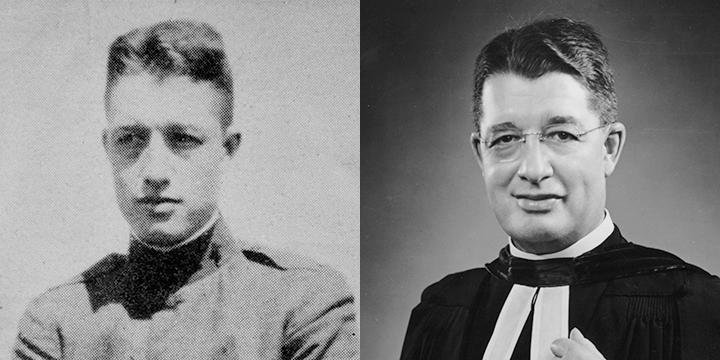
Harrison Ray Anderson (after whom Anderson Hall is named) was involved at Fourth Church over the course of six decades, starting as a seminarian (pictured at left as a World War I military chaplain in 1916) and serving as senior pastor from 1928 to 1961.
In some respects, this personal approach was also necessitated by the departure of several beloved, longtime staff members. In addition to John Timothy Stone stepping down (21 years at Fourth Church), the church soon said goodbye to Harold Dalzell (17 years as assistant minister), longtime cornerstone Vera Eberhart (54 years in a variety of roles!) and, a few years later, Eric DeLamarter (21 years as organist).
A new era was undoubtedly beginning at Fourth Church, but the collapse of the stock market in October 1929—and the prolonged devastation of the Great Depression—soon forced the church to adapt to a new era in America as well. The boom of the 1920s was over; the church’s overall budget would eventually drop by as much as 50 percent, even as overall need in the city skyrocketed. An estimated 660,000 Chicagoans were without work at the Depression’s peak, mirroring the national unemployment rate of 25 percent in 1933.
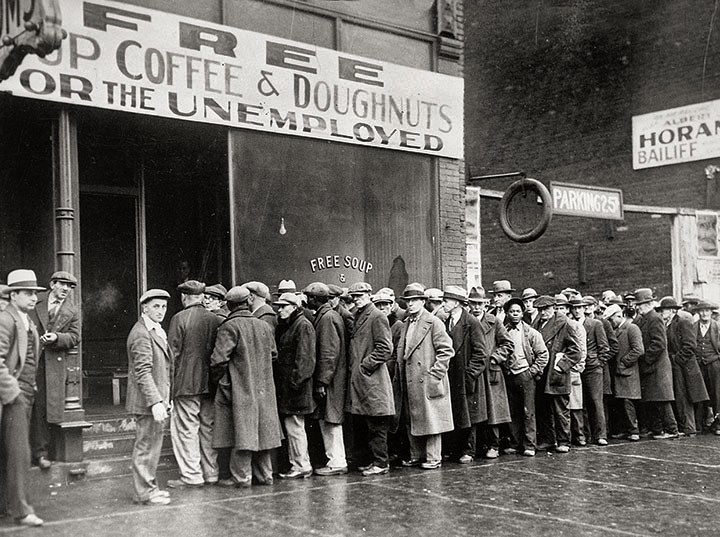
Bread lines were common in Chicago during the Great Depression, as at this 1931 soup kitchen, which also offered “free coffee and doughnuts for the unemployed.”
The church deacons, led by Deaconess Viola Baker, were leaned upon heavily during this time period, assisting around 200 member families at varying points of the Depression with food, clothing, and bills. In 1936, as the church celebrated its 65th anniversary at the tail end of the Depression, Anderson reflected, “The glory of this church is not what it has, but what it gives. For every dollar Fourth has spent on itself it has given a dollar and a quarter for others.”
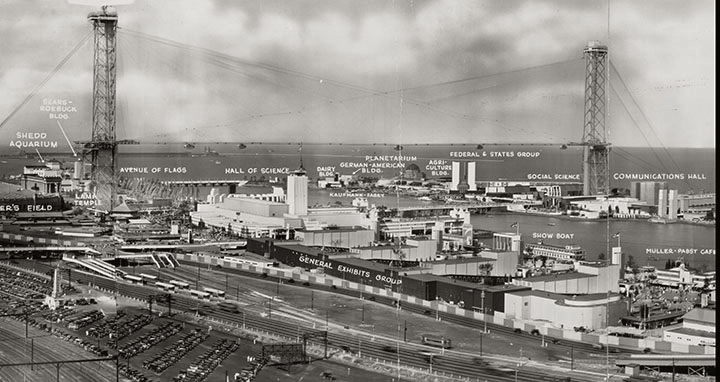
Having started planning to host a World’s Fair before the Great Depression hit, Chicago went through with its 100th-anniversary “Century of Progress” exhibition in 1933 despite dismal economic conditions. The fair, sited on the lakefront south and east of Soldier Field, featured an aerial tram that shuttled sightseers over the water and numerous futuristic pavilions, model houses, and means of transport.
Anderson’s commitment to forging relationships within the church and serving church members in need was admirable, but as time went by, his ministry increasingly became defined by his direct engagement in contemporary politics. Using rhetoric akin to the fire-and-brimstone preaching of the Great Awakening, Anderson once preached, “Chicago’s problem is not that she is bankrupt financially, but that she is bankrupt morally and spiritually. . . . She has lost her standing at the Bank of Heaven, and her position before God needs to be restored as well as her standing before men.”
For the next three decades Anderson would not shy away from directly addressing politics in his sermons—steadfastly advocating for Prohibition, vehemently opposing government assistance programs like the New Deal, and even decrying the wider secularization of society (such as Santa appearing in the city’s Thanksgiving parade)—long after public opinion in these areas had shifted. Towards the tail end of his time at Fourth Church, Anderson would even call out the mayor and several aldermen by name in his sermons, prompting the city council in 1953 to consider whether clergy should be allowed to address civic issues.
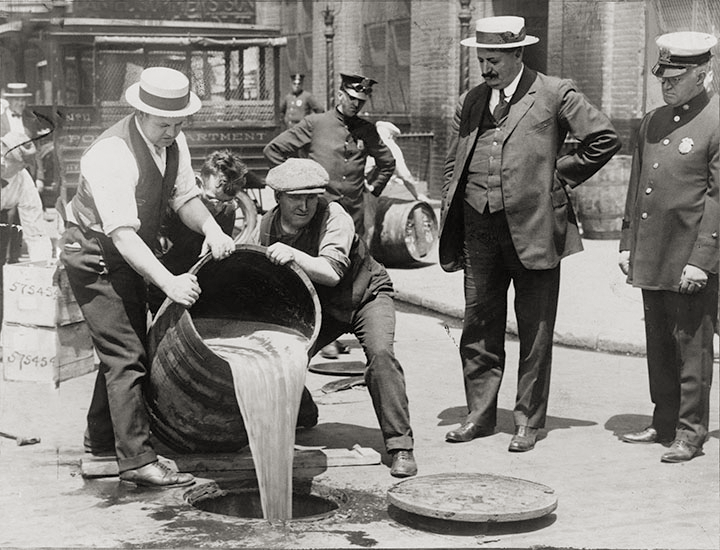
The prohibition of alcohol was legislated into existence in 1920 and legislated out in 1933.
Anderson could also be quite direct about money in his preaching and was protective of the affluent within the congregation—even in the face of backlash following the Depression. “Money isn’t evil or good,” he preached in 1938, “it’s what you do with it and what it does with you.” For him, success in business was merely proof of God’s blessing—but unlike the modern “prosperity gospel” movement, Anderson believed those with wealth had an immense responsibility to others as stewards of those resources. The church’s endowment more than tripled during Anderson’s years as pastor, and his continued appeals for giving helped the church weather difficult times as well as flourish in the post-World War II boom.
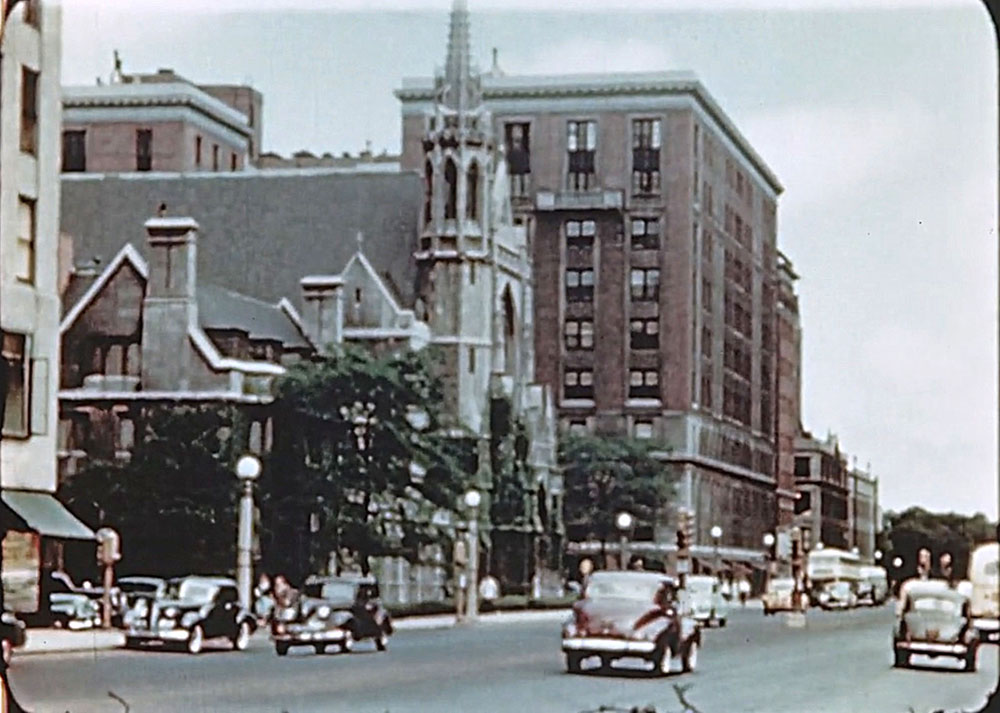
A view of Fourth Church in the 1940s, extracted from a tourism-promotion film produced by the city. Immediately behind the church can be seen the 900 N. Michigan building, a 9-story luxury apartment and retail complex that stood on the site from 1927 to 1984.
Although his views were often discordant with wider public sentiment, Anderson was always willing to speak and act out of the courage of his convictions, and in the next chapter we’ll explore one of the defining moments of his ministry: Fourth Church’s decision to welcome a Japanese–American congregation in the midst of World War II, as well as the church’s wider history as a friend in ministry.
• • •
< Back to Part 4 • On to Part 6 >